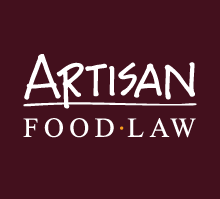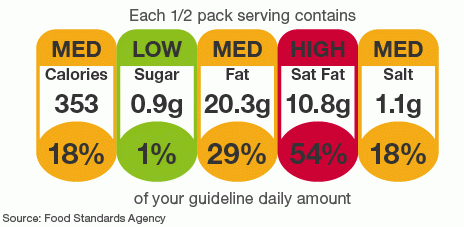Relax, simplified food labelling and traffic lights are on the way …
Only joking of course, and what’s more there are a load of new acronyms for you to get used to as well.
Earlier this month Defra launched a consultation seeking views on plans for new domestic legislation to enforce the food information to consumers (FIC) Regulation (EU) 1169/2011. FIC aims to improve information provided about food so consumers can make informed choices. The new regulations apply from 13 December 2014 with the requirement to provide tabular nutritional information coming in two years later. The existing regulations will be repealed. The FIC covers a range of labelling issues:
- Country of origin – mandatory origin information for most fresh and frozen meat. It will be possible for ‘Scotland’, ‘England’, ‘Wales’ and ‘Northern Ireland’ to be used on food labels under new provenance rules. The origin of main ingredients must be given if different from where the final product is made.
- Nutrition labelling for most foods.
- Labelling clarity – minimum font size for mandatory information.
- Allergen information on all prepacked or loose food with the allergens highlighted in the ingredient list in the former.
- Drinks with high caffeine content to be labelled not recommended for children, or pregnant and breastfeeding women, with the actual caffeine content quoted.
- Meat and fish products that look like a cut, joint or slice and contain more than 5% added water must show this in the name.
- The type of vegetable oil used in food must be stated.
So far, so good you may think? Most recent media coverage has been given over to so-called traffic light labelling widely criticised by the food processing industry so may be it’s a good thing? Somewhat confusingly, responsibility for labelling is shared between Defra, the Department of Health (DoH) and the Food Standards Agency (FSA).
Traffic light labelling falls within the DoH’s remit, consultation on front-of-pack (FoP) nutrition labelling was completed earlier this year and concluded in favour of a single hybrid FoP labelling scheme. Guideline daily amounts (GDAs) are combined with colour coding (red, amber and green – hence ‘traffic lights’) to indicate high, medium and low amounts of calories, fat, saturated fat, sugar and salt. The FIR (the DoH’s acronym for the new EU regulations, but don’t worry FIR and FIC are the same regulations) allow for the continuation of FoP labelling in a similar way to that already introduced in the UK. The FIR provides that additional forms of expression (AFEs) are acceptable where based on sound scientific research and following consultation. No doubt this will be the subject of future debate in the EU and we shall in due course be presented with another list, this time comprising approved AFEs. Meanwhile, traffic light labels will remain a voluntary scheme which the DoH aim to see widely adopted by next summer well in advance of the new regulations.
While traffic lights sound like a simple and workable idea, they are fraught with difficulties. Nutritionist and obesity researcher Zoe Harcombe provided a very useful analysis of what happens with typical foods based on the FSA’s technical guidance on traffic light labelling. Whole milk, for example, gets two amber light warnings for fat content while Diet Coca Cola gets a straight set of green lights, but is it seriously a nutritional and healthy choice, let alone one better than whole milk? You can forget cheddar cheese – two reds and an amber, rump steak fares little better and white bread scores better than more nutritious multi-grain bread.
Writing in the Daily Mail, Joanna Blythman (journalist and author of What to Eat) vividly described what this all means for the great British breakfast – no whole milk, butter on your toast or bacon for you. Even yoghurt with nuts and prunes gets three red lights. Breakfast, we are repeatedly told, is the most important meal of the day. Yet as Joanna Blythman went on to say:
“… anyone following the traffic light scheme too assiduously, avoiding red meat and other red and amber light foods, could easily end up short not only of essential fats, but protein, iron and key vitamins such as vitamin B12.
The recipe for healthy eating is very simple — avoid processed food and base your diet on fresh, raw, unprocessed ingredients that you cook yourself.”
So now you all understand the difference between the FIR and the FIC, have a grasp of your GDAs and AFEs and know what to do with a FoP? You probably by now need to remind yourself that we are actually talking about food, the stuff we choose to put inside ourselves. New regulations proposed by Defra may replace 14 pieces of legislation with a single set of domestic regulations, but it’s hard not to conclude that food labelling will remain a confusing minefield for some time to come.
Consumers may take some comfort from Zoe Harcombe’s advice: “Don’t eat any product that requires a label!”
Hard pressed artisan and small scale food producers must, on the other hand, comply with the legislation or risk serious consequences as Suffolk food firm Stark Naked experienced earlier this month when it was convicted for offences of misleading consumers and fined £23,500 plus costs. Stark Naked’s pesto product recipes changed but the food labels on them did not. Keep your labels legal and up to date!





